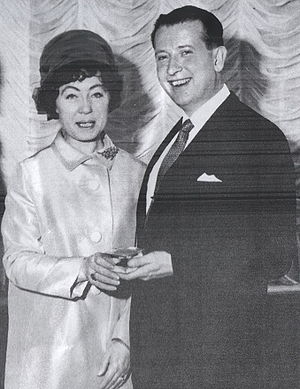
Jim Warman
Encyclopedia

England
England is a country that is part of the United Kingdom. It shares land borders with Scotland to the north and Wales to the west; the Irish Sea is to the north west, the Celtic Sea to the south west, with the North Sea to the east and the English Channel to the south separating it from continental...
electrical engineer. He was born at Westcombe Park in South London. During the Second World war he served in the REME
Reme
Reme may refer to:*Rəmə, Azerbaijan*Royal Electrical and Mechanical Engineers...
.
Jim was a charismatic character and leader of men who was at the forefront in the design of electronic telephone exchanges in the 1960s and 70s. He was responsible for the design of both TXE
TXE
TXE, which stands for Telephone eXchange Electronic, was the designation given to a family of telephone exchanges developed by the British General Post Office , now BT, designed to replace the ageing Strowger systems....
1 and TXE3 which were reed electronic exchanges. The ideas in these exchanges were later developed in the successful TXE4 exchanges, although, for political reasons, not by Jim.
Jim held over 100 patents but the recognition that he truly deserved eluded him and some say that it was because of his quest for perfection. His career started off at Siemens Brothers at Woolwich and he remained there when AEI
Associated Electrical Industries
Associated Electrical Industries was a British holding company formed in 1928 through the merger of the British Thomson-Houston Company and Metropolitan-Vickers electrical engineering companies...
took over the company. AEI was then taken over by GEC who, in 1968, closed down the development of TXE exchanges in favour of crossbar.This turned out to be a big mistake, as Jim was only too aware. All the AEI staff were sacked, including those on the TXE project and it was then that Jim joined GTE
GTE
GTE Corporation, formerly General Telephone & Electronics Corporation was the largest independent telephone company in the United States during the days of the Bell System....
International, the American company, as European technical director based in Milan, along with some members of his team from AEI. Some time later, GTE decided to closedown the development team in Europe and so Jim’s work came to an end, at least for GTE. He returned to the UK and set up his own company but it was not a success and his health failed which led to an early and impoverished death.
It was a sad end to one of the most gifted and unrecognised engineers of recent times, whose ideas eventually led to providing an electronic telephone exchange system (TXE
TXE
TXE, which stands for Telephone eXchange Electronic, was the designation given to a family of telephone exchanges developed by the British General Post Office , now BT, designed to replace the ageing Strowger systems....
4) that, at its peak in the early 90s, catered for more than 25% of the UK subscribers.
Jim did receive one award and that was the Prince Phillip Medal of The City and Guilds Institute in 1966.

